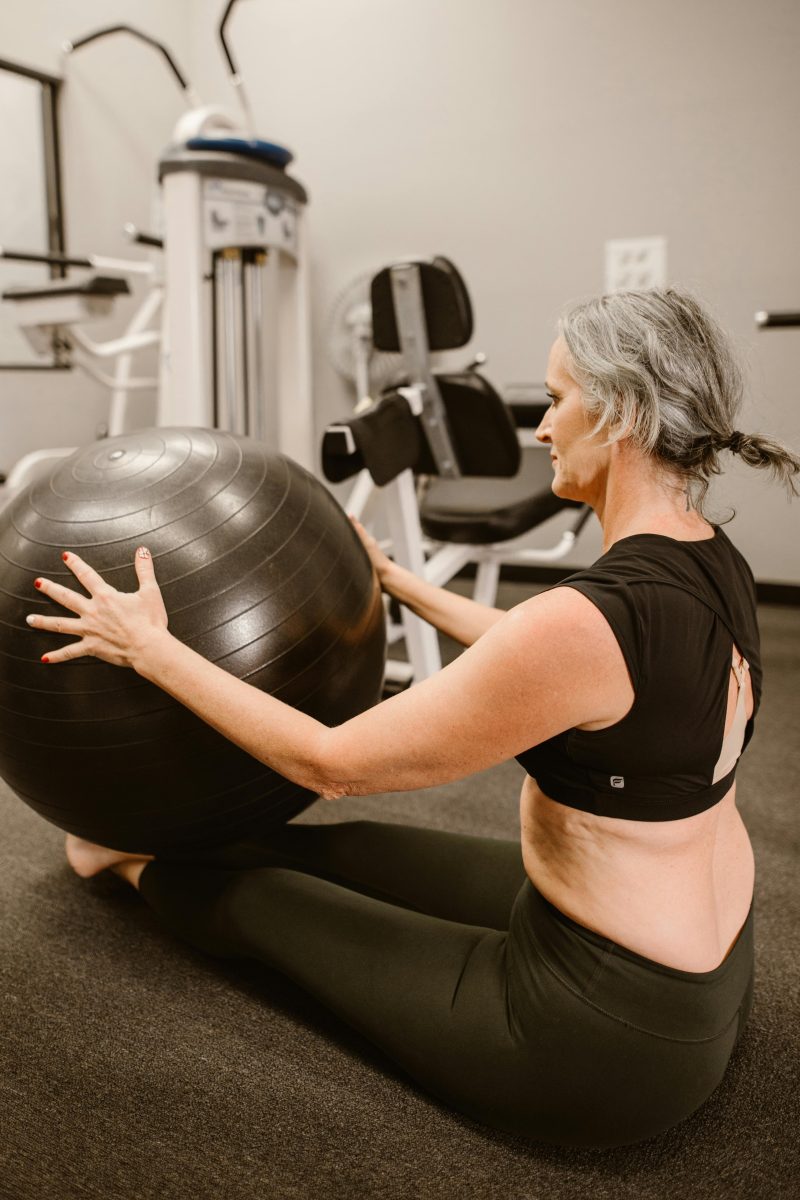Last Updated on: 14th July 2024, 09:33 am
Introduction to Postpartum Fitness

Understanding the postpartum body is the first step toward reclaiming your health and fitness after childbirth. The body undergoes significant changes during pregnancy and delivery, necessitating a tailored approach to exercise. Fitness for new mothers isn’t just about weight loss; it’s about strengthening the core, improving stamina, and enhancing overall well-being. Setting realistic expectations is crucial. Immediate results are less important than gradual progress and consistency. By acknowledging the body’s journey and respecting its pace, new mothers can embark on a fitness journey that is both effective and empowering.
- Stress Management: Engaging in regular, gentle exercise helps in managing stress, improving mood, and boosting energy levels.
- Self-Care: Creating time for self-care, which is essential during the postpartum period.
- Patience and Understanding: Every mother’s body responds differently to exercise postpartum, making it essential to listen to one’s body and adjust accordingly.
Setting realistic expectations is the cornerstone of a successful postpartum fitness journey. It’s easy to fall into the trap of comparing oneself to others or striving for pre-pregnancy fitness levels too soon. Instead, focusing on achievable, incremental goals can lead to more significant, long-term success. Remember, the goal is not just to regain fitness but to nurture and strengthen the body that has accomplished so much.
The Foundation of Postpartum Fitness

Importance of Pelvic Floor Exercises
At the heart of postpartum recovery lies the strengthening of the pelvic floor. These muscles, stretched and possibly weakened during childbirth, are crucial for core stability and control. Engaging in targeted pelvic floor exercises can prevent issues like incontinence and support the recovery of abdominal separation. Simple, yet effective, these exercises form the bedrock of postpartum fitness, empowering mothers to regain confidence in their body’s capabilities.
Core Rebuilding: Techniques and Exercises
Rebuilding the core is more than aesthetic; it’s about restoring the body’s center of strength. Techniques such as deep abdominal breathing and gentle core engagement exercises lay the foundation for a stronger body. Progressing slowly, with a focus on technique over intensity, ensures a safe and effective path to regaining core strength. This gradual approach not only rebuilds physical strength but also fosters a deeper connection between mind and body.
The Role of Breathing Exercises in Recovery
Breathing exercises play a pivotal role in postpartum recovery. They enhance oxygen flow, reduce stress, and facilitate core engagement. By incorporating breathing exercises into the fitness routine, new mothers can improve their physical and mental well-being. This holistic approach to recovery acknowledges the interconnectedness of the body’s systems, promoting healing from the inside out. Breathing exercises, simple in execution but profound in impact, are a testament to the power of gentle, focused recovery.
Developing a Personalized Fitness Plan

Assessing Your Current Fitness Level
Beginning your fitness journey starts with understanding where you are. It’s crucial to evaluate your current fitness level, considering factors like strength, endurance, and flexibility. This assessment forms the foundation of a plan tailored to your unique postpartum body, ensuring exercises are both safe and effective.
Setting Achievable Fitness Goals
Goals give direction. For new mothers, setting realistic, achievable fitness goals is essential. Whether it’s regaining core strength, improving cardiovascular health, or enhancing overall flexibility, clear objectives guide your path forward. These goals, while challenging, should inspire progress, not overwhelm.
Incorporating a Variety of Exercises
A balanced fitness plan embraces diversity. Cardio exercises boost heart health, strength training builds muscle and bone density, and flexibility workouts enhance range of motion. This variety not only prevents boredom but also addresses the body’s comprehensive needs, promoting a holistic approach to postpartum recovery.
Nutrition and Hydration for Postpartum Recovery

Nutritional Needs for Postpartum Recovery
Nourishing your body after childbirth is paramount. A balanced diet rich in vitamins, minerals, and proteins supports tissue repair and energy levels. Iron-rich foods like spinach and lean meats aid in replenishing blood loss, while calcium from dairy or fortified alternatives strengthens bones. Omega-3 fatty acids, found in fish and flaxseeds, promote brain health for both mother and baby. Emphasizing whole foods over processed options ensures a steady supply of nutrients essential for recovery and breastfeeding.
Hydration’s Role in Fitness and Recovery
Hydration is the unsung hero of postpartum recovery. Water facilitates the transport of nutrients, aids in digestion, and helps flush toxins from the body. It’s especially crucial for breastfeeding mothers, as hydration directly impacts milk production. Aim for at least eight glasses a day, more if you’re exercising or breastfeeding. Infusing water with fruits or opting for herbal teas can make meeting your hydration goals more enjoyable.
Foods to Fuel Your Fitness Journey
As you ease into a fitness routine, your diet should evolve to support your energy needs. Complex carbohydrates like whole grains provide sustained energy, while lean proteins assist in muscle repair and growth. Snacking on fruits, vegetables, and nuts throughout the day keeps your metabolism active and energy levels stable. Remember, the goal is to fuel your body with nutrient-dense foods that support both your recovery and fitness objectives.
Overcoming Common Postpartum Fitness Challenges

Dealing with Sleep Deprivation
Sleep deprivation is a formidable challenge for new mothers, impacting energy levels and motivation. Embrace short, restorative workouts that don’t overly tax your system. Consider exercises like yoga or walking, which can be rejuvenating rather than exhausting. Remember, it’s about movement, not intensity. Prioritizing rest whenever possible is also crucial; sleep when the baby sleeps to help mitigate fatigue.
Finding Time for Exercise with a New Baby
Finding time for exercise can seem impossible with a new baby. However, integrating fitness into daily routines can be a game-changer. Use baby nap times for quick home workouts or go for walks with the stroller. Exercise doesn’t have to be continuous; several short sessions throughout the day are equally beneficial. The key is consistency, not duration.
Addressing Body Image and Mental Health
Postpartum body changes can affect self-esteem and mental health. It’s essential to approach fitness with a mindset of self-care rather than self-criticism. Celebrate what your body has accomplished and focus on gradual improvements. Incorporating mindfulness and meditation can also support mental well-being, helping you connect with your body in a positive way. Remember, fitness is a journey of healing and strength, not just physical transformation.
Overcoming these challenges requires patience, creativity, and self-compassion. By adjusting expectations and finding innovative ways to incorporate fitness into your new routine, you can navigate the postpartum period with resilience and grace. The journey back to fitness is not just about the physical; it’s a holistic process that embraces the mental and emotional changes of motherhood.
Safety First: Guidelines and Precautions

When to Start Exercising After Childbirth
- Initiating exercise postpartum should be a gradual process.
- Typically, it’s advisable to wait until after the postnatal checkup, around 6-8 weeks post-delivery, before engaging in more than gentle walking and pelvic floor exercises.
- For those who’ve had a cesarean section or complicated birth, the wait may be longer.
- The key is to start slowly and increase activity levels based on how you feel.
Signs to Slow Down or Stop
- Listening to your body is paramount. If you experience any unusual pain, heavy bleeding, or a feeling of heaviness in the pelvic area, it’s time to pause and rest.
- Other red flags include shortness of breath, dizziness, or any discomfort that feels more than just the usual exertion of a new exercise routine.
- These symptoms signal that your body needs more time to heal.
Consulting Healthcare Providers Before Starting
- Before embarking on your fitness journey, consulting with a healthcare provider is essential.
- They can offer personalized advice and ensure that your exercise plan is safe, taking into account any birth-related complications or concerns.
- This professional guidance is invaluable, as it helps tailor a fitness routine that aligns with your body’s specific postpartum recovery needs.
Adhering to these guidelines ensures that your return to fitness is not only safe but also beneficial for your long-term health and recovery. By prioritizing safety and listening to professional advice, you can confidently take the first steps towards regaining your strength and well-being.
Motivation and Support for Postpartum Fitness

Building a Support System
- Embarking on a fitness journey after childbirth is more manageable with a robust support system.
- Surround yourself with friends, family, or a postpartum fitness group who understand your goals and the challenges of motherhood.
- This network can offer encouragement, share tips, and even join you for workouts, making the journey less daunting and more enjoyable.
Setting and Celebrating Milestones
- Setting achievable milestones is crucial for maintaining motivation. Start with small, manageable goals, such as a daily walk or pelvic floor exercises, gradually increasing intensity and duration.
- Celebrate each achievement, no matter how small, to recognize your progress. These celebrations can be simple, like a relaxing bath or a favorite treat, serving as reminders of your hard work and dedication.
Staying Motivated Through the Ups and Downs
- Motivation will naturally ebb and flow, but staying focused on your long-term goals is essential.
- On challenging days, remind yourself of why you started and the benefits you’ve already noticed.
- Keeping a fitness journal can help track progress and reflect on how far you’ve come.
- Remember, every step forward, no matter how small, is a victory in your postpartum fitness journey.
Ultimately, the path to postpartum fitness is not just about physical strength but also about nurturing your well-being. With a supportive community, realistic goals, and a resilient mindset, you can navigate the ups and downs of this journey. Embrace each phase with patience and celebrate your body’s capabilities, moving closer to your fitness and wellness goals with each passing day.
In Closing
Postpartum fitness is a journey of empowerment and resilience. It’s about finding strength in the transformation that motherhood brings. Through a blend of pelvic floor exercises, core rebuilding, and mindful nutrition, new mothers can navigate the challenges and joys of postpartum recovery. This path, marked by patience, self-compassion, and gradual progress, leads to a stronger, healthier self. Embrace each step with confidence, knowing that every effort moves you closer to your wellness goals.
Postpartum Fitness: Safe Strategies for New Mothers FAQs
Exercise can be beneficial in managing symptoms of postpartum depression due to the release of endorphins, which enhance mood. Moderate physical activity, especially in a group setting or outdoors, can provide social interaction and increase exposure to sunlight, both of which can improve mental health. However, it’s important to consult with a healthcare provider for a comprehensive treatment plan if you’re experiencing symptoms of postpartum depression.
Signs you might be overdoing it include increased postpartum bleeding, any pain, or feeling overly fatigued. It’s crucial to start slowly and gradually increase the intensity of your workouts to avoid injury and other complications. If you experience any of these symptoms, it’s a sign to reduce the intensity or take a break.
Breastfeeding can affect your exercise routine by requiring more hydration and possibly more calories to maintain milk supply. It’s important to feed your baby or pump just before exercising to avoid discomfort from engorged breasts and to wear a supportive sports bra. Additionally, staying hydrated and listening to your body’s hunger cues will help you adjust your routine to meet your body’s needs.
It’s recommended to wait at least three months before resuming high-impact exercises like running, but this can vary based on individual recovery. Starting with low-impact exercises and gradually increasing the intensity allows your body to adjust and strengthens your pelvic floor and core muscles. Consult with a healthcare provider to ensure your body is ready for high-impact activities.
Aim for at least 150 minutes of moderate-intensity aerobic activity spread throughout the week, as recommended by health guidelines, but start with what you can manage and gradually increase. Incorporating strength training exercises two days a week can also support muscle tone and bone health. Remember, even short bouts of activity can be beneficial, and it’s important to listen to your body and adjust based on how you’re feeling.
Yes, pelvic floor exercises are essential after childbirth to strengthen the muscles weakened during pregnancy and labor. These exercises help in preventing incontinence and can improve the recovery process. Regularly performing pelvic floor exercises can also enhance sexual satisfaction by improving muscle tone.
Diastasis recti is the separation of the abdominal muscles that can occur during pregnancy, affecting postpartum fitness by making certain exercises potentially harmful if not addressed. It’s important to avoid exercises that can exacerbate the condition, such as crunches, until the gap has sufficiently healed. Consulting with a physiotherapist who specializes in postpartum recovery can provide exercises that safely strengthen the core and help close the gap.
Comfortable, supportive clothing and a good-quality sports bra are essential for postpartum exercise. Your body has gone through significant changes, so it’s important to wear attire that supports your breasts, especially if you are breastfeeding, and does not restrict your movement. Proper footwear that provides stability and support is also crucial to prevent injuries.
Low-impact activities such as walking, postnatal yoga, and swimming are safe and beneficial for most new mothers. These activities help to gently strengthen the core and pelvic floor muscles without putting too much strain on the body. Gradually increasing the intensity and duration of these exercises can help you safely build your fitness level.
You can generally start exercising after your six-week postnatal check-up, but it’s important to get your doctor’s approval first. Light exercises like walking or pelvic floor exercises can often be started earlier, depending on how you feel and the specifics of your delivery. Always listen to your body and don’t rush the process.
Orlando is a all round athlete from Australia, now resident in Germany. His sports of passion of American Football(Offensive line), weight training and indoor rock climbing where he uses his 195cm wing span to his advantage.



